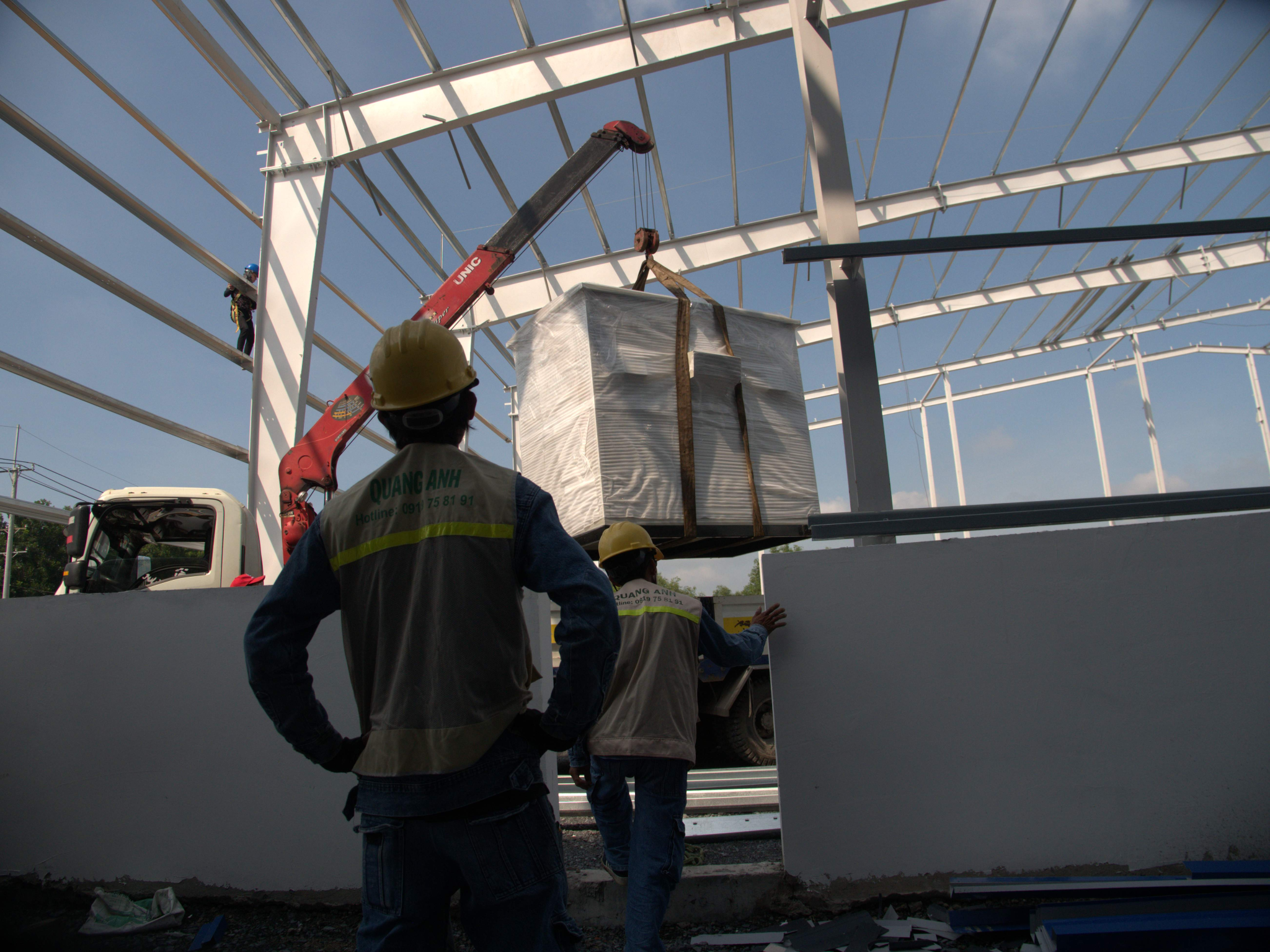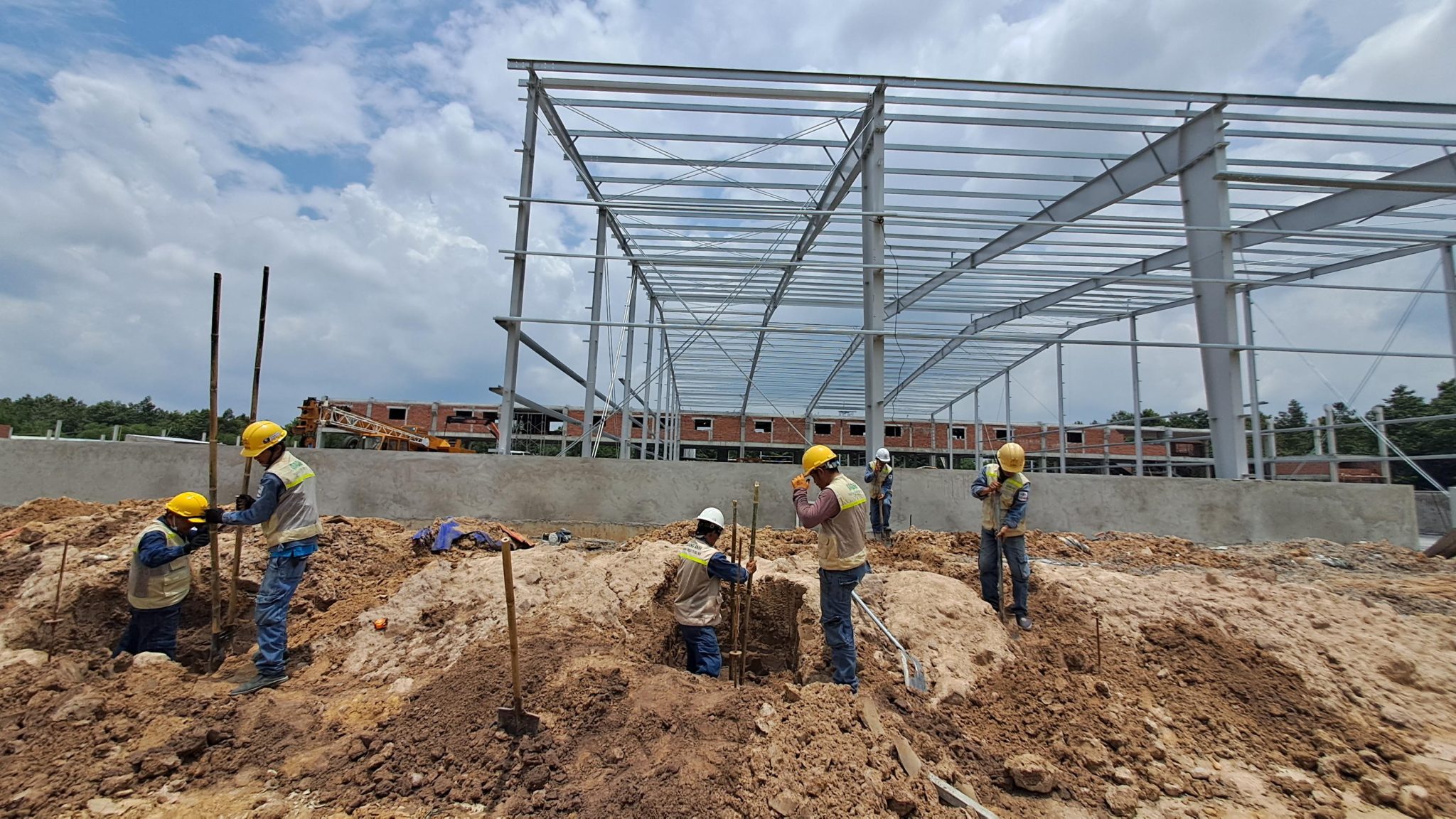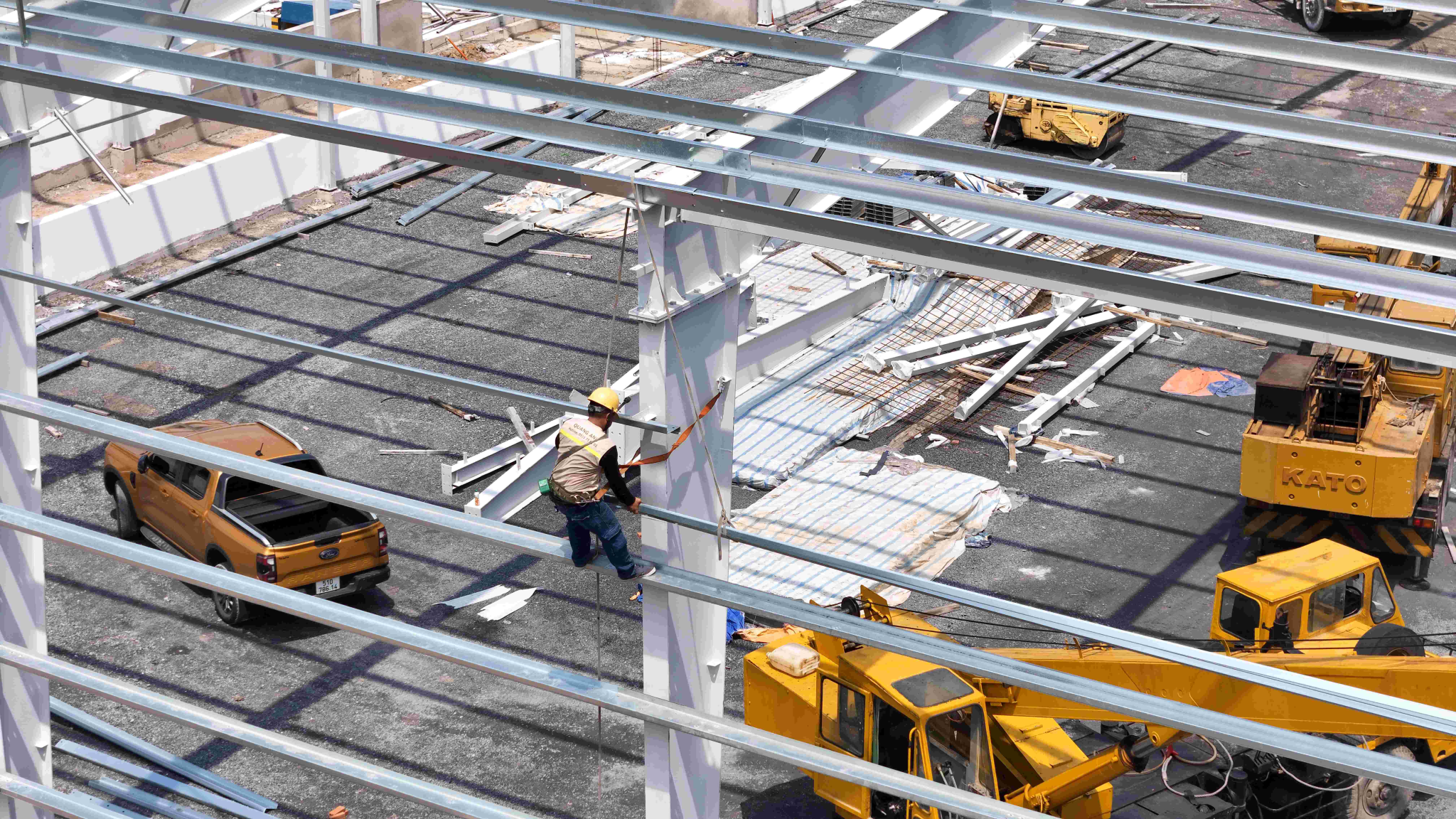Uncategorized @vi
Factory Electrical Installation: Process and Safety Standards
Factory electrical installation is a complex process requiring high precision and safety. This process comprises several key steps to ensure the electrical system operates efficiently and minimizes risks.
Overview and Role of Factory Electrical Installation
Factory electrical installation involves designing and building the electrical system for industrial production facilities. This includes installing electrical equipment, power cables, and power distribution systems to create a stable, safe system that meets the energy demands of production equipment.
Factory electrical installation is one of the key factors in ensuring efficient operation for industrial facilities. The presence of an industrial electrical system not only supplies necessary energy sources but also optimizes factory electrical performance, protecting equipment and personnel from potential risks.
Objective and Important Components
Factory electrical installation includes the design, construction, and installation of electrical systems per the needs of each production facility.
- Main Power Cable System Installation: This is an essential component of the dynamic power system, channeling electricity from the transformer station to necessary areas within the factory.
- Cable Tray Installation: Used to fix and protect cables, necessary for effective management and maintenance.
Role of Factory Electrical Installation
- Ensures Factory Electrical Safety: Proper electrical installation prevents accidents like fires or electrical shorts, ensuring the safety of both people and equipment.
- Optimizes Factory Electrical Performance: Good electrical systems not only keep machinery running stably but also minimize downtime due to electrical-related issues.
- Enhances Efficiency and Energy Savings: Reasonable design reduces energy loss, optimizing electricity usage.
Factory Electrical Installation Process
Factory electrical installation is typically carried out through the following main steps:
- Survey and Design: Determine the current electrical conditions and the energy consumption requirements of each device.
- Main Power Cable Installation: Choose suitable conductors, mark, and fix them to ensure system safety.
- Install Cable Trays: Firmly fix trays to protect cables from damage.
Correctly performed factory electrical installation provides a safe and efficient production environment, allowing facilities to operate stably and save energy.

Factory Electrical Installation Process
The factory electrical installation process includes surveying and designing, planning execution, main power cable system construction, cable tray installation, UPVC pipe and cable installation, and finally inspection and operation. Each step must be carefully implemented to ensure the factory electrical system operates efficiently.
- Survey and Plan Construction
This process begins with surveying the current system at the factory, accurately measuring the location of electrical equipment, and correctly assessing power consumption needs. Then, design the electrical system, allocate equipment and electrical lines appropriately. Before implementation, the design needs to be presented and approved by the technical council. - Execute Power Supply System
Main power cable system construction involves installing main drive cables from the transformer station to the main switchboard (MSB). Depending on technical requirements and investors, the system can be surfaced or submerged in HDPE pipes or metal pipes. It is crucial to choose the appropriate cross-section conductors for safety and efficiency. - Install Cable Trays
Cable trays safely and scientifically guide and protect electrical cables in the factory. Installation must follow technical regulations to ensure safe distances and ease of maintenance and repair. - Install Electrical Cabinets
Installing distribution and control cabinets is a crucial step, including checking connections and switching devices like MCB, ACB to ensure the system operates safely and stably. - Cable Conduit and Medium, Low Voltage Installation
Before constructing the transformer station base, install UPVC or metal pipes to thread cables, ensuring standards against water resistance, fire protection, and aesthetic project appearance. - Inspection, Acceptance, and Trial Operation
The final step is to inspect the entire electrical system, including measuring insulating resistance, checking switchgear, and conducting a trial operation. This process uncovers and fixes issues before the system is officially used.
Technical and Safety Measures in Construction
- Adhere to national electrical safety standards and building codes to ensure worker and equipment safety.
- Use certified electrical materials and equipment from reputable manufacturers such as Thibidi, EMC, EEMC, ABB, Schneider, Mitsubishi, LS, Cadivi.
- Implement comprehensive labor protection measures for workers, including protective clothing, warning signs, and measures against shock and timely rescue.

Safety Standards in Electrical Installation
Safety standards in factory electrical installation include ensuring worker safety with personal protective equipment, complying with international electrical standards, and conducting regular system checks to promptly detect and repair potential problems.
Legal Bases and Technical Regulations
- Latest National Technical Regulations on Electrical Safety: QCVN 01:2020/BCT issued per Circular 39/2020/TT-BCT is an important legal document establishing safety standards in electrical installation, ensuring safe electrical installation.
- Related regulations: Includes QCVN QTĐ 5:2009/BCT, QTĐ 6:2009/BCT, QTĐ 7:2009/BCT, providing detailed guidance on safe electrical installation in various situations.
- Vietnamese Standard (TCVN) TCVN 4086-85: National standard on electrical safety in construction, ensuring worker and equipment safety.
Requirements for Equipment and Electrical Systems in Construction
- Equipment must have a proper technical specification for the working conditions to ensure mechanical durability, withstand during installation and operation.
- The electrical system must be protected from elements such as water, dust, temperature or chemicals. Conductors need insulated coverings and positioning at a safe height: at least 5m where vehicles pass, 2.5m where under construction.
- Electrical parts must be tightly insulated and placed in convenient positions to ensure safe electrical construction.
Personnel and Construction Organization Requirements
- Training and Certification: Electrical workers need to be trained and certified in electrical safety techniques before engaging in work.
- Professional Level: Operators of high-voltage electrical equipment must reach safety level 4 or higher to ensure electrical labor safety.
- Construction Site Network Diagram: A clear electrical network diagram is needed to supervise and operate the electrical system safely and efficiently.
Safety Measures in Electrical Construction
- Pre-construction Safety Check: Employers ensure checking safety measures per national standards before and during construction.
- Specialized Protective Equipment: Use appropriate electrical labor protection to avoid electrical shock onsite.
- Rescue Plan: A rescue plan is needed for quick response in electrical incidents to minimize risk.
Specific Electrical Safety Technical Regulations
- Electrical cables must be clearly insulated and reasonably placed on holders and poles for safety in electrical construction.
- Lines and equipment should be installed at appropriate heights to avoid impact from other construction materials.
- Electrical equipment must be well-maintained, suitable for harsh conditions on-site such as dust, moisture, and high temperatures.
Electrical safety standards are not just rules but the foundation to ensure safety and efficiency in constructing electrical systems. Strict compliance with standards and regulations will minimize the risk of occupational accidents, protecting lives and assets.

Factory electrical installation ensures a stable and safe electrical system, minimizing risk and optimizing energy needs. This is crucial for optimizing long-term investment costs for industrial facilities.
Contact QuangAnhcons now at hotline: +84 9 1975 8191 for detailed consultation on factory electrical installation.
QuangAnhcons provides electrical system installation services ensuring quality and safety, meeting all technical and international standards.

 English
English 简体中文
简体中文 Deutsch
Deutsch 日本語
日本語 한국어
한국어 ไทย
ไทย Русский
Русский Français
Français